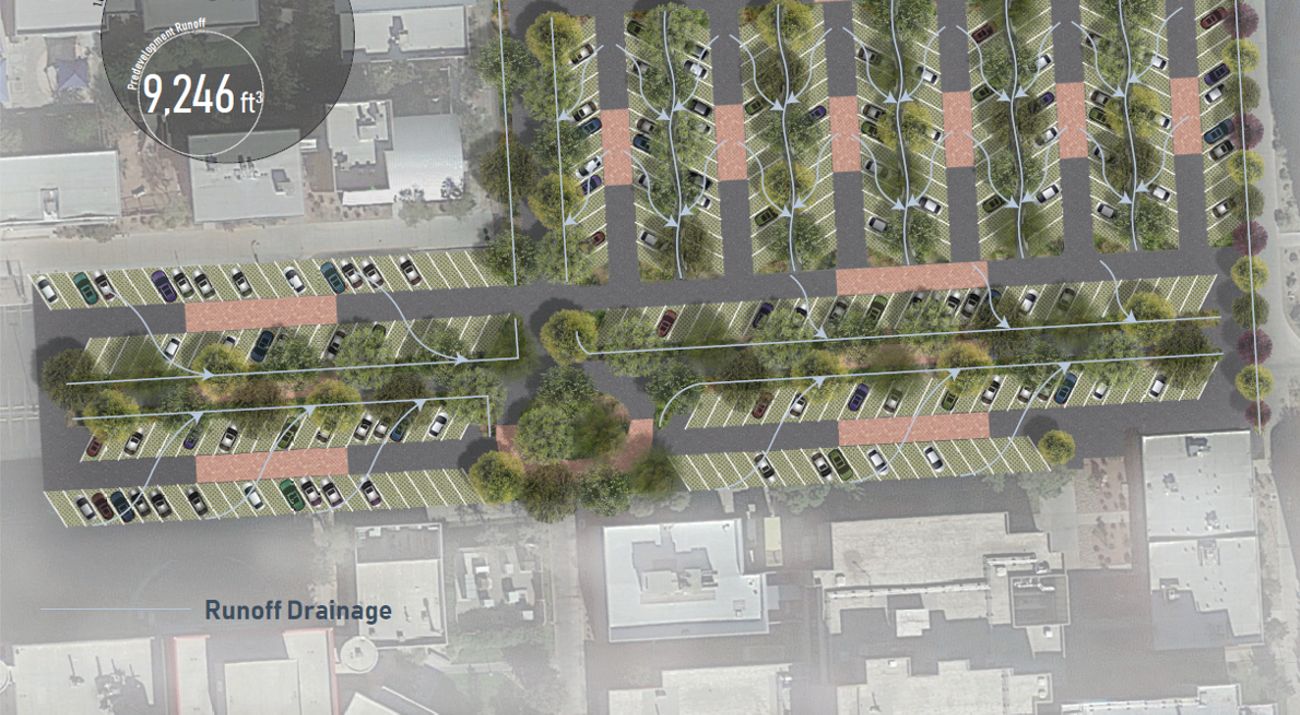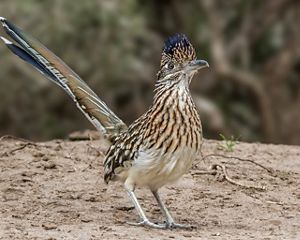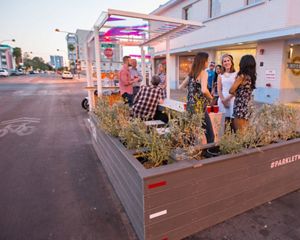Getting Rid of the Parking Lot: A Nature-Friendly Las Vegas
We're collaborating with landscape architecture students to address pressing urban issues.
As one of the world’s hottest cities in the driest state in the U.S., Las Vegas is at the epicenter for issues of water scarcity and urban heat island effect. Large swaths of asphalt and concrete blanket the city and contribute to extreme temperatures in summer months, posing significant public health risks and impacting desert wildlife while, in winter months, air pollution is often trapped in the Las Vegas Valley.
Las Vegas is among the country’s fastest growing cities, and it’s becoming increasingly clear that in order for people and nature to thrive, we need to work to solve challenges in the urban space itself. The good news is that if we can tackle these challenges in America’s hottest and driest land, we can tackle them anywhere in the country.
Quote
The good news is that if we can tackle these challenges in America’s hottest and driest land, we can tackle them anywhere in the country.

Welcome to the future in fabulous Las Vegas
In a semester-long studio class, UNLV Landscape Architecture students have set out to reimagine urban Las Vegas, and they are starting with the vast black asphalt parking lots blanketing the city. The effort is an innovative partnership between TNC’s Nevada Chapter, North America Cities, the University of Nevada Las Vegas (UNLV), and the University of Southern California (USC), sponsored by the Nevada Division of Forestry. Additional contributors to the project included Cecilia Schafler, a local Las Vegas landscape architect; Dr. Jonathan Eyer from USC; and Dak Kopec, Associate Professor at the UNLV School of Architecture
Working with Assistant Professor Phillip Zawarus, TNC provided input during the development of the class curriculum as well as staff resources to act as “visiting instructors.” The Nevada Chapter’s Len Warren conducted field classes to teach the students how to incorporate ecological planning into landscape design to create functional urban habitats for resident and migratory birds, as well as other wildlife.

Designing an extreme urban makeover
This work culminated with each student developing a design model for the parking lots of the UNLV campus, tackling issues of urban stormwater, heat island, air pollution, wildlife habitat, as well as public health and safety. The students did not limit their work to design. They quantified the ecosystem service and public health benefits to show the ecological and economic performance of the landscapes they have designed.
The students’ nature-friendly parking lot plans acted as blueprints for delivering solutions to a variety of urban issues and a host of benefits for people. The analyses reported that redesigning the parking lots for a single building complex in Las Vegas could reduce stormwater runoff by 250,000 cubic feet (99%), save more than $3 million in maintenance costs, and create 7x more habitat for native birds (not to mention improving pedestrian safety and ADA accessibility and incorporating areas for people to rest or enjoy). The new parking lots also showed cleaner air, reduced energy costs, and increased carbon storage.
The ideas represent a sort of “extreme urban makeover,” that can relatively quickly transform Las Vegas parking lots into habitat for wildlife, while also benefiting people. But the change wouldn’t be just superficial: The designs apply a powerful, science-based approach to urban planning and design that can be used anywhere.
Assistant Professor Phil Zawarus explains, "Bringing in a diverse group of professionals on projects will always produce a more comprehensive resolution to the many challenges we face in the urban environment. This partnership with allied professions benefits the project outcome itself, but because it involves the efforts of students, as well, it gives them ownership and confidence as future leaders in sustainable design regionally and nationally. That is one of the ultimate goals we are looking to achieve at UNLV.”
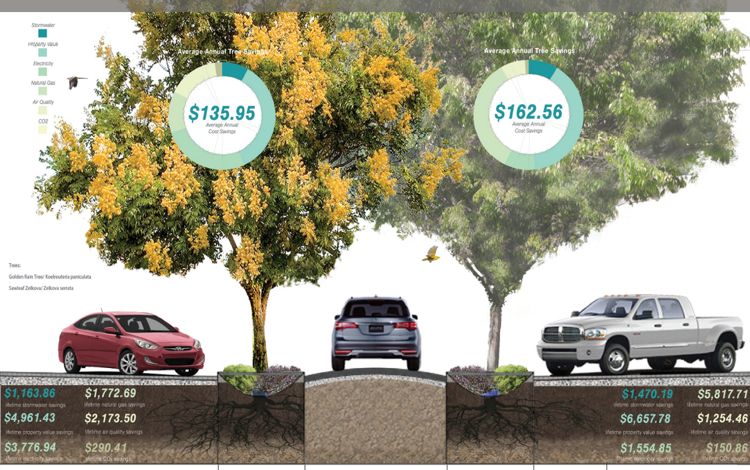
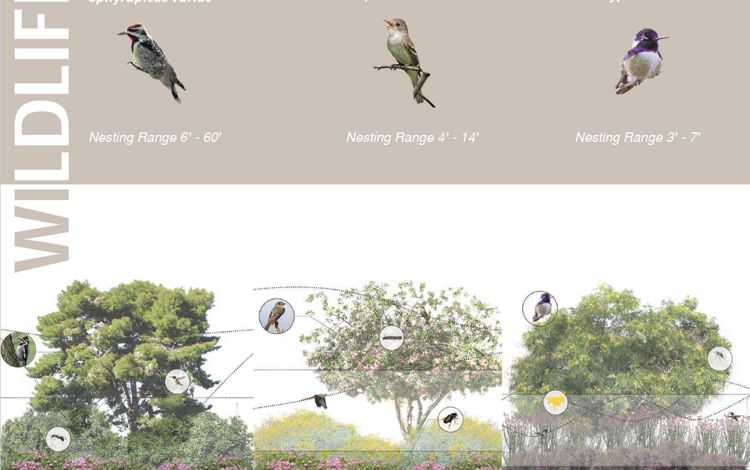
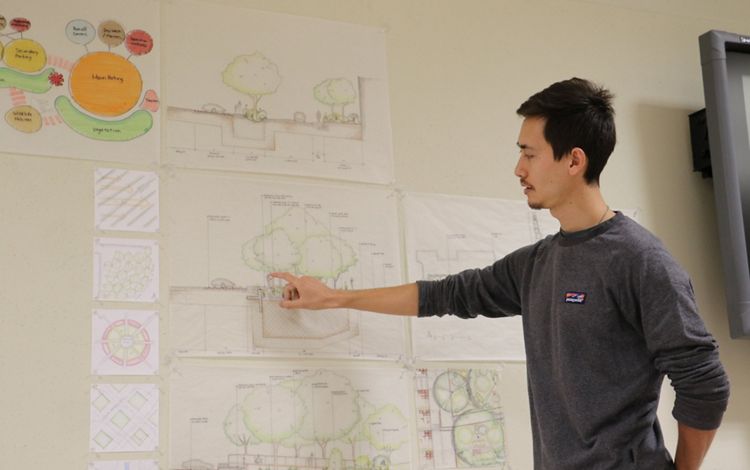
Additionally, TNC’s Rachel Holmes worked with students to evaluate tree health using innovative techniques to better understand the variables impacting urban tree canopy in a desert environment. These data will be integrated into nationwide work being done by her team, in partnership with the US Forest Service.
“Trees in urban landscapes are incredibly vital to healthy communities in cities throughout the world. People expect a great deal from our cities’ trees, but often set them up for failure, let alone flourishing,” says Rachel Holmes, Urban Forestry Strategist for TNC. “Indeed, we value trees in parking lots for shading parked cars, yet expect them to grow in the inhospitable conditions of asphalt lots. Phillip and his students are inspiring the much-needed transformation in the way we manage the urban forest floor, particularly, the paved forest floor. Their work is a critical tool in the protection of life-sustaining urban trees.”
Quote
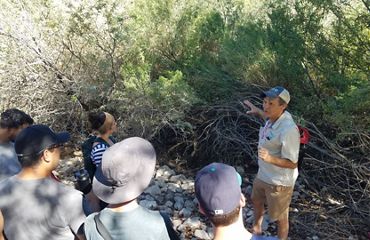
This collaboration is an exciting step as we start our work not only to conserve 'out there' but to create functional habitats right here.
Turning designs into reality
The next step is to turn this vision into reality with demonstration projects. TNC is working with UNLV to bring these design concepts to fruition throughout the valley. By using science, we can calculate nature’s benefits to residents and wildlife and bring these groundbreaking designs to scale in new housing developments, schools, parks, and other urban spaces.
The Nature Conservancy has a long history of conserving the incredible natural areas Las Vegas, including Ash Meadows National Wildlife Refuge, Red Rock Canyon National Conservation Area, and Walking Box Ranch. But we have been limited in our engagement in conservation in the city itself. This collaboration is an exciting step as we start our work not only to conserve “out there” but to create functional habitats right here.
